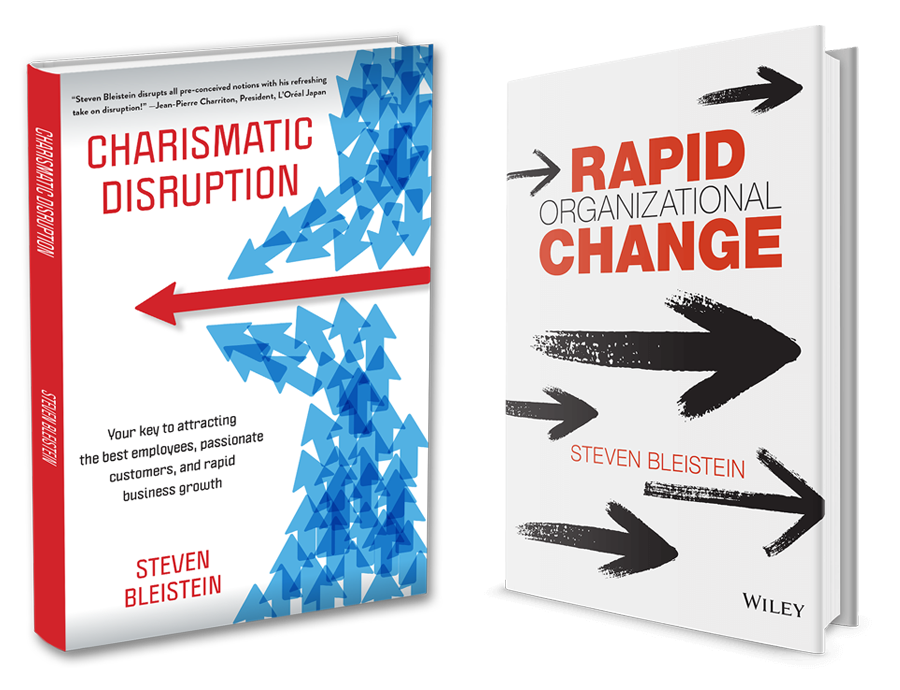[:en]All senior level executives and managers are asked to develop and present a strategy, whether global strategy, regional strategy, or simply strategy for a team or department they oversee. Many managers create long slide presentations with lots of data to justify why their strategy is right. However, the most persuasive managers talk about all the reasons their strategy might be wrong.
Every strategy looks perfect in PowerPoint. You can justify any course of action with a reasonable argument, and you can always find data to back up a desired conclusion.
All strategy depends on key assumptions, whether explicitly stated or implied. Click To TweetNo one can possibly know everything or predict the future with complete accuracy, so there is always the chance of an assumption being wrong. Successful managers identify risks to their strategy and manage those risks as part of their strategic plan.
For example, a strategy might depend on an assumption that there are only three major competitor brands in the market. But what if a non-competitor company suddenly expands into the market and becomes a competitor? The strategy may no longer be valid in that case, and may need to be altered mid-course. For example, when convenience stores in Japan like Seven-Eleven started offering freshly brewed coffee, what did that mean for coffee shops like Starbucks, Dutour and the like?
You identify risks to strategy by asking “What if…?” type questions about your assumptions. So for example, if you were developing strategy for a Japanese insurance business, a key assumption might be that the competitors are well-known and the business is relatively predictable. However, what if Google Japan started offering insurance products, which given Google’s massive data capability and mountain of cash, is not unimaginable? What would such a move by Google mean for the strategies of companies like Meiji Yasuda Life, Nippon Life, and other Japanese insurance businesses?
Once you have identified a risk, what can you do to manage it? You have four options: (1) You can take preventative action to reduce the risk from being realized, (2) you can plan contingent action should the risk be realized, (3) you can plan a combination of both preventative and contingent actions, and (4) you can do nothing and simply live with the risk and its consequences.
While it may seem counterintuitive, talking soberly about what might go wrong and what you plan to do about it inspires confidence and trust. A capable manager can always appreciate your mastery of processes to help ensure strategy stays on track when things go awry during execution—and as we all know, things do go awry.
So how should you talk about what might go wrong when presenting strategy?
- State your strategy and the rationale behind it succinctly. No strategy, no matter what scale or complexity, should not require more than a few sentences to explain. A manager who cannot succinctly explain his or her strategy will be viewed as not having a grasp on his or her business.
- State the major assumptions upon which your strategy is based. What is it about your business environment that must hold true for your strategy to succeed? Three to five major assumptions should suffice.
- Describe how you will validate each assumption. What will you monitor? How will you measure it? By when will you know whether or not your assumption is correct, or is it an assumption that requires continuous monitoring?
- Restate each assumption as a risk. Remember, ask “What if…?” type questions.
- Describe how you plan to manage each risk. What preventative and contingent actions are in your plan? Or do you feel it is reasonable to live with a risk and the consequences should the risk be realized? Explain why.
The most persuasive managers do not simply justify why they are right. They describe a convincing plan for in case they are wrong. Your strategy can be persuasive by doing the same, and you can demonstrate that as a strategic manager, you are a cut above the rest.
A version of this article was published in Japanese in the Smart Time column of Nikkei Sangyo Shimbun on August 10, 2017.
 [:ja]トップレベルの役員やマネージャーであれば、戦略を立ててそれをプレゼンする機会を与えられることがある筈です。彼らの多くは、自分の作った戦略が正しいことを証明するための長いプレゼンテーションを用意します。しかし、真に説得力のあるマネージャーであれば、逆に何故自分の戦略が間違っている可能性があるか、という理由を並べる筈です。
[:ja]トップレベルの役員やマネージャーであれば、戦略を立ててそれをプレゼンする機会を与えられることがある筈です。彼らの多くは、自分の作った戦略が正しいことを証明するための長いプレゼンテーションを用意します。しかし、真に説得力のあるマネージャーであれば、逆に何故自分の戦略が間違っている可能性があるか、という理由を並べる筈です。
どんな戦略でも、パワーポイント上では完璧に見えます。大抵の戦略内容を合理的な論拠で正当化することは可能ですし、自分にとって理想的な結論に持っていくために使えるバックアップ用のデータも、見つけようと思えば大体見つかるものです。
戦略の全ては大きな仮定事項に基づいています。 Click To Tweet戦略の全ては大きな仮定事項に基づいています。でも未来のことが全て確実にわかる人などいませんから、その仮定も間違っている可能性はあるわけです。できるマネージャーというのは自分の戦略にあるリスクを認識し、そのリスクにどう対応するかというところまで戦略に入れています。
例えばある戦略が、自分たちの市場には主に3つの競合相手しか存在しないという仮定に基づいていたとしましょう。そこで自分の仮定に対し、「もしこんなことが起きたら・・・」という疑問を投げかけることがリスクを認識することにつながります。日本の保険会社のための戦略を立てている場合であれば、有名かつその動向を比較的予想しやすい競合会社が、その仮定の一部になっているかもしれません。そんな中で、グーグル・ジャパンがその豊富な所有データと財政力を武器に保険商品を売り出すことも有り得るとは思いませんか。そのようなことが起これば、日本のメジャーな保険会社の戦略に与える影響は計り知れません。
リスクを特定したら、それに対する4つの対応策が考えられます。
- リスクが実現する可能性を抑えるための予防処置をとる。
- リスクが実現してしまった時のための準備を行う。
- 予防処置と不測事態発生のための準備の両方を行う。
- 何もせず、リスクとそれがもたらすかもしれない結果に甘んじる。
保険会社であれば、想定される競合相手からの脅威を最小限に食い止めるためのこのような予防対策をすることが可能です。
(1)迅速なイノベーションと新しい保険商品の販売を可能にするために、インフラをアップグレードする。
(2)顧客が自分で保険の内容を変えたり、新しい保険をカスタマイズして購入することができる、オンラインプラットフォームを開発する。
(3)ソーシャルメディアやニュースといった、まとまりのない最新データを、保険に使えるような機能を開発する。
(4)将来競合相手となる可能性があり、規制の厳しい保険業界に詳しい保険会社と繋がることが利益となるような企業(例えばグーグル)と提携する。
予定がうまくいかない可能性やうまくいかなかった時の対処法について真剣に話し合うと、そこには自信や信頼が生まれます。できる上司であれば、不慮の事態が発生した時にも戦略を遂行するためのプロセスをあなたがじっくり考えていることについて、感謝の念を抱く筈です。
不慮の事態について話す時、以下の4点が重要になってきます。
- 簡潔に戦略とその論拠を述べましょう。ビジネスをしっかり把握していれば、どんな戦略でも2〜3文もあれば説明できます。
- 戦略のベースとなった仮定事項を挙げます。大体3〜5の仮定事項で十分でしょう。
- それぞれの仮定事項を立証する方法を説明します。
- それぞれの仮定事項を今度はリスクとして捉えて説明します。各々のリスクに対する対応策を述べ、その論理も説明してください。
最も説得する力のあるマネージャーは、単に自分を正当化することで終わらせません。自分が間違っていた時のための納得のいくプランを説明します。あなたもそうすることで戦略をより説得力の強いものにし、また戦略マネージャーとしての手腕も飛び抜けていることを周りに認めてもらうことができる筈です。
(このブログ記事に基づいた記事は、2017年8月10日付の日経産業新聞Smart Times欄にも掲載されました。)


